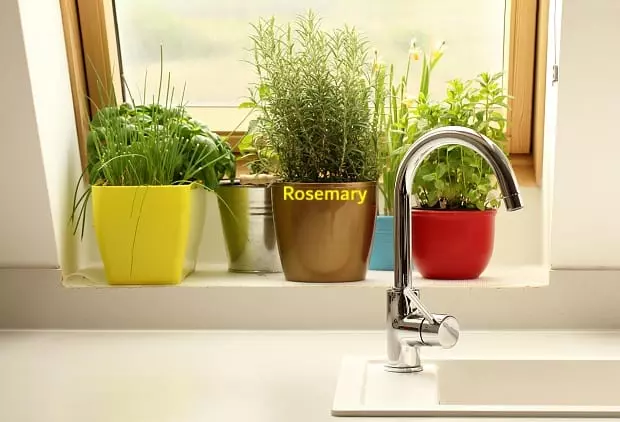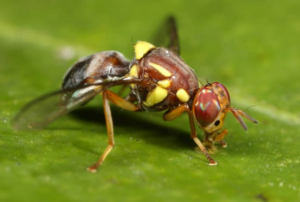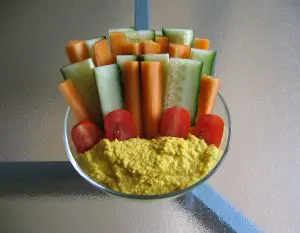Most of us can benefit from a little more vegetables in our lives, and growing them at home is the best way to ensure those dinner plates are stacked with a heap of greens every time. But what if you don't have much space outside to grow your favourite vegetables or you live in a climate that makes it difficult to grow veg all year round? Well, how about growing them indoors? It sounds radical but it's actually quite easy to do with a good indoor grow tent.
Any room or even your living room can be turned into an indoor vegetable garden. Not only that, growing indoors keeps your plants healthier because they're free from pests and grown organically, plus, plants that are grown in a controlled environment like this usually grow faster producing better harvests. Indoor vegetable gardening can be a very exciting and rewarding thing to do!

Different vegetables can sometimes have slightly different requirements, but all vegetables need these 5 things to grow successfully:
#1 The correct vessel – Most vegetables require about 30cm or 12 inches of growing depth so ensure your containers/vessels are at least this big. Yes, you can grow some crops in less, for example, micro greens or salad crops (lettuce) but in general a larger pot is advisable. Make sure the container has drainage holes or drill your own if it doesn't. Use drainage trays under the containers to capture any excess water so you don't get a watery mess under your potted indoor garden. Replenish the potting mix each year for new crops to help prevent disease and allow new plants an easier growing medium for its roots to penetrate rather than a root bound pot from the last crop.
#2 Rich soil – You'll want a good quality medium to grow your vegetables so either create your own or buy a commercial potting mix suited to veggies. Tip: Add perlite to the mix for better drainage and aeration.
#3 Vegetable fertiliser/nutrients – Plants need to feed and also benefit from a boost once-in-a-while so ensure you use a complete vegetable fertiliser as directed throughout the life of the plant. A leaf tonic or seaweed drink about once a month is also recommended.
#4 A reliable light source (especially when growing indoors) – Vegetable crops are hungry, energy-intensive plants and a lot of this energy is typically absorbed from the sun so if you're growing indoors a grow light is necessary in most cases, although if you have a really sunny room (sunroom) or window ledge that gets a lot of light this might be all that's needed to grow great indoor vegetables.
#5 Temperature – In general, most of the common vegetables will grow well in a temperature range of about 18C – 28C (64F – 82F) and the middle of this range is usually considered comfortable for people. Basically, a good rule of thumb is if your indoor temp is fine for you then your plants should be happy enough also.
Without those essential requirements (above) your plants won't do well no matter how much love you put into growing them.
So, What are 5 top food plants to Grow Indoors?!
Basil (Herb)
Basil is an exceptionally easy medicinal herb to grow inside or outside the home and works very well in an internal window box. To stay healthy and productive basil needs about 6 hours of natural sunlight (or artificial grow lights) every day.

Feed regularly with organic fertiliser to keep it producing lots of foliage. Basil can grow fast and increase in size so quickly that you'll want to keep an eye on it (or make heaps of pesto) as it may start to cross other shrubs in your window box. However, you can easily split and replant it if needed (or just eat it).
A member of the mint family, basil is very aromatic and easily flavours drinks or foods. Basil plants can actually act as natural air fresheners. Just run your hands over the leaves to release the fragrance and enjoy the delightfully sweet, peppery flavor in whatever foods you wish.
Rosemary (Herb)
Rosemary is a little trickier to grow indoors than basil but with the right plan and execution, it's also rather easy. First of all, rosemary is a long-lived plant (unlike basil which is annual or perennial at best) therefore it requires more care and more space because it can grow into a rather large shrub in the right conditions. Rosemary does best when watered regularly and has access to at least 6 hours of sunlight.

When selecting a container to grow rosemary make sure you do get one that is large enough to allow for root development and expansion. You can grow rosemary in smaller containers or planter boxes but you must ensure you keep the plant pruned back as this will also limit root growth and keep it happier.
Rosemary is an exceptionally versatile culinary herb and can be used to flavour sauces, pickle mixes, drinks, meats, vegetables, and desserts. Due to its longevity, rosemary can be a set and forget food plant ready for use whenever you require for years to come.
Green/Spring Onion (Vegetable)
Green onions, spring onions, (or scallions) are incredibly easy to grow indoors or outdoors for that matter. You can even regrow them from ones purchased at the grocery store by leaving the bulbs intact and harvesting the tops as required.

Simply place the bulbs in a good medium and they will grow to produce delicious green tops over and over.
To get a good yield, give your green onion around two inches of growing space in the surrounding soil and make the medium at least six inches deep. They need six hours of sunlight every day, so make sure you put them on a sunny window or under quality grow lights. Keep them moist and they will be ready for harvest as a "cut and come again plant" in a few weeks.
Spring onions are a good substitute for regular onions and are excellent in stir-fries, salads, and fried rice dishes. Why not try some tossed with fries or in a ginger martini?
Carrots (Vegetable)
Carrots are one of the most common and easiest of vegetables to grow. Growing carrots indoors gives you even more control over moisture and sun exposure and therefore better results. Plus, carrots are easier to grow in containers compared to growing in the ground outside because you can create a growing medium better suited for a root crop rather than hard or rocky ground which can impede proper root development.

If you want to grow a quick easy crop try small varieties and you'll only require about eight inches deep of soil/medium in the container. If you want to grow full sized carrots make sure that your vessel is at least 12 inches deep.
Carrots need at least six hours of light and it's best to direct sow into the container where they are to grow (rather than transplant seedlings) with a light covering of soil or compost or seed raising mix keeping moist and the seeds should sprout easily in about a week.
Once they do sprout, thin out extra seedlings leaving about an inch or two between plants. Apply a little fertiliser about every 2-3 weeks and in a few months they should be ready to harvest.
Toss them in soups and salads, bake them, sauté them, or roast them – there's little doubt as to why carrots are so deliciously popular the world over.
Fig Tree (Fruit tree)
If you're considering growing a fruit tree indoors a fig is one of the best because they grow faster and produce fruit earlier than most other types of fruit trees. Also, figs grow well in containers and seem to like being a little restricted – even non-fruiting fig trees make lovely ornamental indoor trees.

Choose a fig tree from a local nursery and transplant it into a medium to large container allowing for reasonable root growth. The tree can be pruned and kept to a manageable size and remember fruit forms on new growth not old.
As with most fruit and veg, your fig tree will need adequate light to grow well so choose a spot where it gets about 6-8 hours of direct or even in-direct light per day on average.
There's nothing much better than freshly harvested figs warmed up and drizzled with warm honey on top for an incredibly tasty snack.

Conclusion
I hope this article on 5 great food plants to grow indoors gives you some insight or motivation into trying them for yourself. Remember there are plenty of other vegetables, fruits, and herbs to try also and the best way to learn is to just start growing!
All the best and happy indoor growing…
Editor: This article was a guest post written by Ashley. We sometimes allow guest posts on Self Sufficient Me to help other creators or businesses to promote their content, products, or website.













